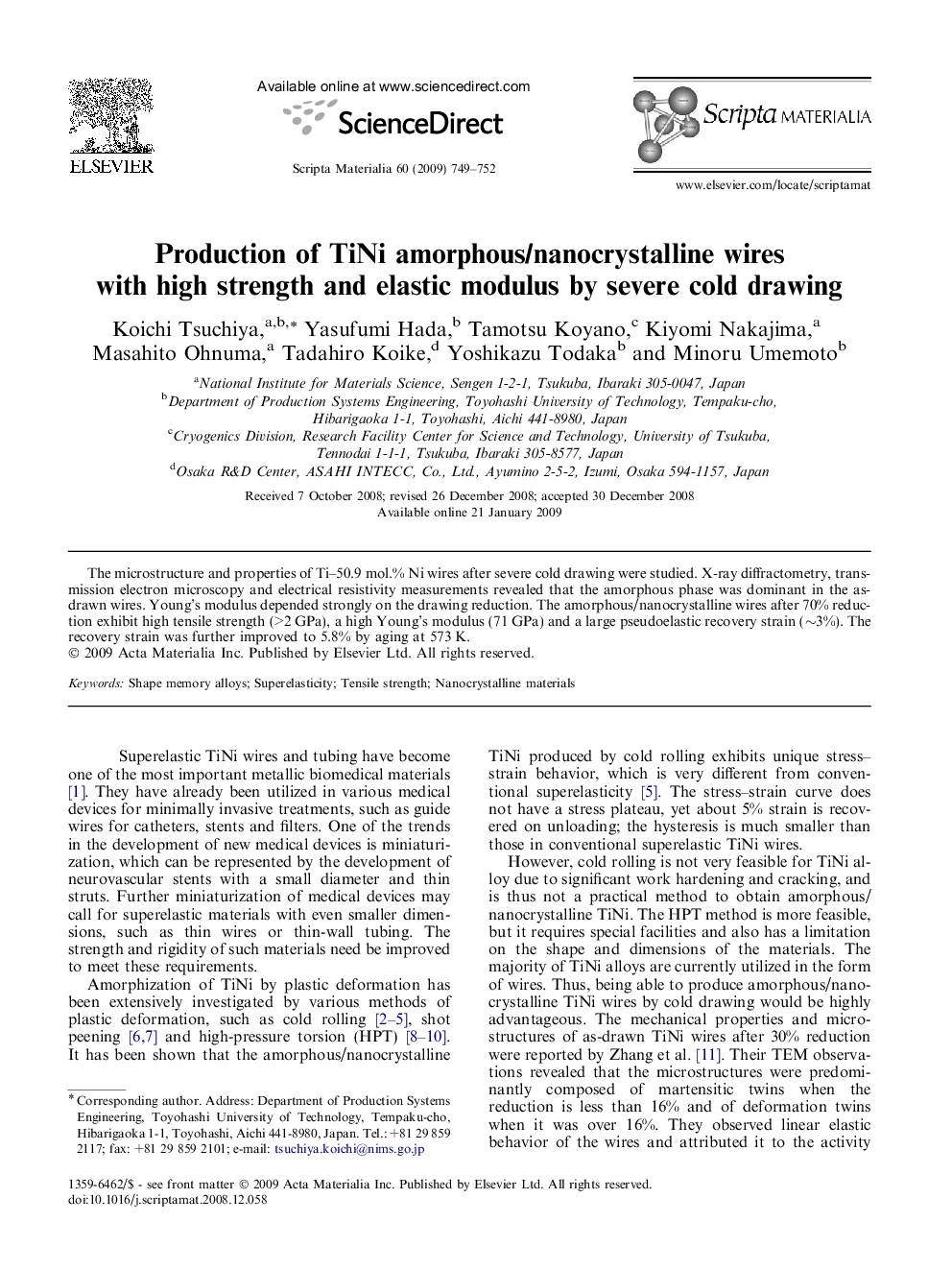| Article ID | Journal | Published Year | Pages | File Type |
|---|---|---|---|---|
| 1502423 | Scripta Materialia | 2009 | 4 Pages |
Abstract
The microstructure and properties of Ti–50.9 mol.% Ni wires after severe cold drawing were studied. X-ray diffractometry, transmission electron microscopy and electrical resistivity measurements revealed that the amorphous phase was dominant in the as-drawn wires. Young’s modulus depended strongly on the drawing reduction. The amorphous/nanocrystalline wires after 70% reduction exhibit high tensile strength (>2 GPa), a high Young’s modulus (71 GPa) and a large pseudoelastic recovery strain (∼3%). The recovery strain was further improved to 5.8% by aging at 573 K.
Related Topics
Physical Sciences and Engineering
Materials Science
Ceramics and Composites
Authors
Koichi Tsuchiya, Yasufumi Hada, Tamotsu Koyano, Kiyomi Nakajima, Masahito Ohnuma, Tadahiro Koike, Yoshikazu Todaka, Minoru Umemoto,
